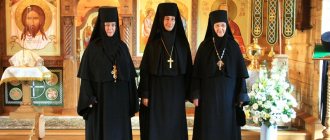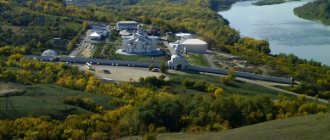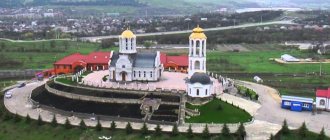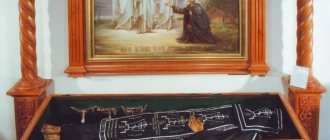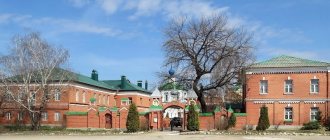Mir
Russia Nizhny Novgorod region Makaryevo village Zheltovodsk Makariev convent Map is loading…
{"format":"leaflet","minzoom":false,"maxzoom":false,"limit":50,"offset":0,"link":"all","sort":[""], "order":[],"headers":"show","mainlabel":"","intro":"","outro":"","searchlabel":"\u2026 \u0441\u043b\u0435\ u0434\u0443\u044e\u0449\u0438\u0435 \u0440\u0435\u0437\u0443\u043b\u044c\u0442\u0430\u0442\u044b","default":"","import-annotation":false,"width ":"auto","height":"350px","centre":{"text":"","title":"""link":"""lat":56.0871479999999991150616551749408245086669921875,"lon": 45.06008800000000036334313335828483104705810546875,"icon":""},"title":"","label":"","icon":"","lines":[],"polygons":[],"circles":[ ],"rectangles":[],"copycoords":false,"static":false,"zoom":8,"defzoom":14,"layers":["OpenStreetMap"],"image layers":[] ,"overlays":[],"resizable":false,"fullscreen":true,"scrollwheelzoom":true,"cluster":false,"clustermaxzoom":9,"clusterzoomonclick":true,"clustermaxradius":80, "clusterspiderfy":true,"geojson":"","clicktarget":"","showtitle":true,"hidenamespace":false,"template":"","userparam":"","activeicon": "","pagelabel":false,"ajaxcoordproperty":"","ajaxquery":"","locations":[{"text":"\u003Cb\u003E\u003Ca href=\"/palomnik/%D0% 96%D0%B5%D0%BB%D1%82%D0%BE%D0%B2%D0%BE%D0%B4%D1%81%D0%BA%D0%B8%D0%B9_%D0%9C% D0%B0%D0%BA%D0%B0%D1%80%D0%B8%D0%B5%D0%B2_%D0%B6%D0%B5%D0%BD%D1%81%D0%BA%D0% B8%D0%B9_%D0%BC%D0%BE%D0%BD%D0%B0%D1%81%D1%82%D1%8B%D1%80%D1%8C\» title=\»\u0416\ u0435\u043b\u0442\u043e\u0432\u043e\u0434\u0441\u043a\u0438\u0439 \u041c\u0430\u043a\u0430\u0440\u0438\u0435\u0432\u0436\u0 435\u043d\u0441\u043a\u0438\ u0439\u043c\u043e\u043d\u0430\u0441\u0442\u044b\u0440\u044c\»\u003E\u0416\u0435\u043b\u0442\u043e\u0432\u043e\u0434\u0441\u 043a\u0438\u0439\u041c\ u0430\u043a\u0430\u0440\u0438\u0435\u0432 \u0436\u0435\u043d\u0441\u043a\u0438\u0439 \u043c\u043e\u043d\u0430\u0441\u0442\u0 44b\u0440\u044c\u003C/a\ u003E\u003C/b\u003E\u003Chr /\u003E\u003Ca href=\»/palomnik/%D0%A1%D0%B2%D0%BE%D0%B9%D1%81%D1%82%D0%B2% D0%BE:%D0%90%D0%BD%D0%BD%D0%BE%D1%82%D0%B0%D1%86%D0%B8%D1%8F\» title=\»\u0421\u0432 \u043e\u0439\u0441\u0442\u0432\u043e:\u0410\u043d\u043d\u043e\u0442\u0430\u0446\u0438\u044f\u003E\u0410\u043d\u043d\u043e \u0442\u0430\u0446\ u0438\u044f\u003C/a\u003E: "'\u0416\u0435\u043b\u0442\u043e\u0432\u043e\u0434\u0441\u043a\u0438\u0439 \u0421\u0432\u044f\u04 42\u043e-\u0422\ u0440\u043e\u0438\u0446\u0435-\u041c\u0430\u043a\u0430\u0440\u0438\u0435\u0432 \u043c\u043e\u043d\u0430\u0441\u0442\u044b\u0 440\u044c»' \u043e\u0441 1434 1434 u044b\u043c\u041c\u0430\u043a\ u0430\u0440\u0438\u0435\u043c \u0416\u0435\u043b\u0442\u043e\u0432\u043e\u0434\u0441\u043a\u0438\u043c \u0438 \u0423\u043d\u 0436\u0435\u043d\u0441\u043a\ u0438\u043c","title":"\u0416\u0435\u043b\u0442\u043e\u0432\u043e\u0434\u0441\u043a\u0438\u0439 \u041c\u0430\u043a\u0430\u0440\u04 38\u0435\u0432 \u0436\u0435\u043d\u0441\u043a\u0438\u0439 \u043c\u043e\u043d\u0430\u0441\u0442\u044b\u0440\u044c","link":"","lat":56.087147999999 9991150616551749408245086669921875,"lon" :45.06008800000000036334313335828483104705810546875,"icon":""}],"imageLayers":[]}
56.087148; 45.060088
Russia, Nizhny Novgorod region, Lyskovsky municipal district, Makarievo village
Makarievo village, Nizhny Novgorod region
Russia
Telephone.:
8 (83149) 2-63-60, 2-18-60, 5-91-69
Email:
Zheltovodsk Holy Trinity Macarius Monastery
founded in 1434 by St. Macarius of Zheltovodsk and Unzhensk. Belongs to the Lyskov and Lukoyanov Russian Orthodox Churches. Patronal feast day - August 7 (memory day of St. Macarius of Zheltovodsk and Unzhensk).
History[edit]
The monastery was founded in the first half of the 15th century by St. Macarius of Zheltovodsk and Unzhensk. Zheltovodsk is named after the Yellow Lake, on the shore of which St. Macarius founded a monastery. The Volga, changing its course, eventually swallowed up the lake, and the monastery ended up on the Volga bank.
The altar of the central cathedral is consecrated in honor of the Holy Trinity, which is why the monastery is called Trinity.
In 1439, it was burned by Khan Ulu-Mukhammed, the monks who had squatted on someone else’s property were killed, and St. Macarius was taken captive. Kazan Khan Ulu-Makhmet paid special attention to the handsome abbot. Those who brought the prisoner said: “This is a meek man; neither by word nor by deed did he harm anyone, not only among his own people, but even among our fellow tribesmen, he did not settle on our lands, he did not take them without permission.” Then the khan angrily shouted at the military leaders: “Why did you insult such a good husband, who did not argue with you, and ruined his home? Or don’t you know that for such meek people Allah Himself, Who is One above all, can be angry?” Having said this, Ulu-Mahmet ordered the release of the innocent sufferer. Having received freedom, the Monk Macarius asked to release other prisoners. 400 men and several women with children were freed from their shackles.
Returning to their homeland, the travelers stopped on the right bank of the mouth of the Sviyaga River. Saint Macarius chose this place not only for a three-day rest, but also to establish a monastery on it. It is located on a hill, protected from the winds on three sides by a mountain, like a high earthen rampart. Sources of spring water irrigate the land in abundance, consecrated by the prayer of the reverend father.
But the Kazan Khan forbade them to stay on his territory, and the wanderers had to look for another refuge. Finally, having reached the borders of the Galich land, they stopped in the city of Unzha. The local residents joyfully received the Monk Macarius and surrounded him with reverence and care. But the great ascetic, seeking first of all the Kingdom of God (Matthew 6:33), left the city. 15 versts from him, on an elevated deserted place, on the right bank of the Unzha River, Saint Macarius built himself a cell. This is how the new Zheltovodsk Makaryev-Unzhensky Monastery was created. And again those thirsty for monastic life flocked to the loving father. A monastery was soon established, but for a short time the monks could enjoy the godly speeches and life of the holy elder. At the 95th year of his life, on July 25, 1444, the Monk Macarius departed to the Lord. Dying, the saint commanded his spiritual children “in memory of his deliverance from Hagaryan slavery” to build a monastery on the banks of the mouth of the Sviyaga River, in the place that he himself chose and consecrated with prayer. But the monks could not at the same time fulfill this will...
Nikon studied Orthodoxy in the monastery for eight years, remaining there as a novice until 1624.
Old Believers believe that on the way to Unzha he founded one of the Kerzhenets monasteries - Olenevsky, which fell into schism in the 17th century. The monastery was rebuilt on the old site by the Murom resident Abraham in 1620. A ciborium-rotunda has now been built over the grave of Abraham.
The convenient location of the monastery in the middle of the navigable Volga and the diligence of the abbots influenced the formation of the fair on the lands belonging to the monastery. Named after the Makaryevskaya monastery, the fair was the largest in Russia and, probably, in Europe. It was from trade fees that the monastery was rebuilt and stone buildings were erected. After the church schism (1653-56), one of the strongholds of the Old Believers became the Kerzhenets River, practically at the mouth of which the Makaryevsky Monastery stands. Largely for political reasons, in 1817 the Makaryevskaya fair was moved to Nizhny Novgorod (without losing, however, the name “Makaryevskaya”), the monastery’s income became scarce, the monastery was recognized as superfluous, a major fire occurred in it, and soon the monastery was abolished, the surviving icons were inherited Alexander Nevsky Cathedral. The monastery was restored again in 1883, but as a women's monastery. By 1917, there were about 300 sisters in the monastery. During the years of Soviet power, the monastery was liquidated. In 1928-1929, an orphanage was located within its walls, during the Great Patriotic War - an evacuation hospital, in 1943 the monastery was assigned to the Lyskovsky Veterinary College, livestock was kept in the temples and feed was stored.
Since 1991, the monastery buildings have been transferred to the Nizhny Novgorod Diocese. In the same year, by decision of the Holy Synod, the Makaryevsky Zheltovodsky Convent was reopened. About 25 nuns lived in the monastery.
Near-monastery attractions
Some of them have a homely appeal, envelop you with warmth and are remembered for a long time.
Museum "Fairy Tale"
This is a private “cultural point” of the Fomin family. It looks like a nice residential building with turrets behind a cozy birch fence. The house-museum is 50 years old. It was furnished by the artist Boris Fomin, the current owner of the collection is the daughter of an enthusiastic collector of “fairytale” paraphernalia.
Among the exhibits are landscape paintings of these places, exotic wood sculptures and original wire paintings reminiscent of lace weaving. The range of heroes is wide - from Baba Yaga to a giant spider and a wooden shoe.
Loom Museum
About 100 meters from the monastery, on Sovetskaya Street, there is this cute house of ethnotechnics and the art of weaving. It will interest inquisitive visitors with useful master classes. The mini-museum is open daily from 9.00 to 18.00. Day off is Monday.
Ostrich zoo
Nizhny Novgorod residents have a lot of love for the exotic, and the ostrich farm in Makaryev is direct proof of this. It is doubly profitable, since it pleases not only with profits from meat products, but also has become a center of agritourism. For visiting children, such a trip to the zoo is a rare entertainment. From the coastal zone of the “monastery-pier” to the site with long-legged birds, a PAZIK bus, painted with their silhouettes, takes you.
A visit to the poultry farm is agreed upon in advance, individually. The inhabitants of the bird kingdom (and this is a motley group of adults, ostriches and guinea fowl and turkeys that “accompany” the Australian ostriches) can be fed, and you are allowed to take photographs with them. Meat dishes and eggs are available on the signature menu. And besides the above - feathers and cosmetics with ingredients made from the fat of exotic birds.
Monuments
Today, guests of the holy place on the banks of the Mother Volga are greeted by the founder and patron of the monastery, Saint Macarius of Zheltovodsk, frozen under a large cross in the robes of a schema monk. With a testament scroll in his left hand, on which is inscribed: “Faith without works is dead.” The authorship of the phrase-call is attributed to the Apostle James. The author of the artistic project was Vladimir Nagornov, a master who managed to give his creation a deeply symbolic meaning.
Those who wish to get acquainted with monuments further away from the fortress-sanctuary are advised to drive towards Bor and climb the “Moss Mountains” - a 50-meter steep slope. There is an observation deck-circle with a “paired” monument to Gorky and Chaliapin. Both the bronze figures themselves and the breathtaking panorama are impressive. However, you can only include this object in your one-day plan if you are driving your own car: it is difficult to “walk” there on foot.
Shrines[edit]
- head and part of the finger of St. Macarius of Zheltovodsk and Unzhensk
- Makaryevskaya Icon of the Mother of God
- icon of St. Macarius of Zheltovodsk and Unzhensk
- particle of the relics of St. John Chrysostom
- particle of the relics of St. Nicholas the Wonderworker
- particle of the relics of St. Feofan the Recluse
- particle of the relics of St. Theodosius of Chernigov
- particle of the relics of the Great Martyr. St. George the Victorious
- particle of the relics of the Great Martyr. Panteleimon
- particle of the relics of the Military Medical Center. Catherine
- particle of the relics of the Military Medical Center. Barbarians
- particle of the relics of the Military Medical Center. Lyudmila
- particles of the relics of the MCC. Evdokia, Daria, Daria and Maria Puzovsky
- particle of the relics of the blgv. book Daniil of Moscow
- particles of the relics of the bgvv. Peter and Fevronia of Murom
- particle of the relics of St. Seraphim of Sarov
- particle of the relics of St. Lavrenty Chernigovsky
- particle of the relics of St. Theodore of Sanaksar
- particles of the relics of St. Alexandra, Martha and Elena Diveevsky
- particles of the relics of the blasphemous. Pelageya, Paraskeva and Maria Diveevsky
- particle of the relics of the saint Matrona of Moscow
- a particle of the relics of rights. Theodore naval commander (Admiral Ushakov)
- graves of the murdered brethren of the first monastery founded by the Monk Macarius himself
- the grave of Elder Avramiy (in the rotunda), the renovator of the Makaryevsky Monastery since 1620, through whose prayers healings of those suffering from various ailments occur
Architecture
The monastery attracts attention with its fortified white walls, on which watchtowers are located. You can get inside only through the massive gates, which also serve as the entrance to the gate temple in honor of the Archangel Michael. Within the fortress walls are the nuns' cells and administrative and economic premises.
The main temple of the monastery is the Cathedral in the name of the Holy Life-Giving Trinity. It was built on the model of the Assumption Cathedral of the Moscow Kremlin. Inside the temple you can still see traces of floods from the Volga overflow, which occurred periodically until the monastery was protected by an earthen rampart. The temple has a renewed iconostasis, but many frescoes have not been restored to this day.
© Prohoziy
In total, there are 6 ancient churches on the territory of the monastery: Trinity Cathedral, built in 1664; church in the name of St. Macarius of Zheltovodsk, built in 1809; the gate church of the Archangel Michael, founded in 1674; Assumption Church with a bell tower and refectory, erected in 1654; a house church in the name of St. Gregory of Pelshem, erected in 1786, and a cell church in the name of St. Anthony the Great. There are also ancient graves on the grounds, hidden in a small, well-kept garden.
In addition to the temple complex, the monastery has two courtyards: the Cathedral of the Holy Transfiguration in Lyskovo and the Cathedral of the Kazan Icon of the Mother of God in the village of Makaryevo.
The schedule of services can be viewed on the official website of the Holy Trinity Makarievsky Zheltovodsky Monastery. Entrance to the monastery is available from early morning until evening. There is no entrance fee, but the church welcomes any voluntary donations.
Schedule of services of the Holy Trinity Makarievsky Zheltovodsky Monastery
The courtyard of the Makaryevsky Zheltovodsky Monastery in Google Maps panoramas
How to get there[edit]
Directions:
The monastery is located in the village of Makarievo, Lyskovsky district, Nizhny Novgorod region. You can get here either through the city of Lyskovo or through Nizhny Novgorod. From Nizhny Novgorod, from the Kanavinskaya bus station, a bus runs to Mikhailovsky via Bor and Makaryevo. From Lyskov: in summer - ferry crossing; in winter, on foot on ice or by air taxi (“air cushion”). In summer the ferry leaves from Lyskov at 6:15; 8:15; 12:15; 15:15 and 18:15. In early spring and late autumn, the first and last flights are canceled. They charge from 40 to 80 rubles per passenger. For a car from 300-400 rubles and above. Ferry telephone number: 8930-8029-959.
Address:
606250, Nizhny Novgorod region, Lyskovsky district, Makarievo village
Tel.:
8 (83149) 2-63-60, 2-18-60, 5-91-69
Email:
Official site
Briefly about the time and rules of service
- On Sundays and holidays, services begin: all-night vigil - at 18.00, Divine Liturgy - at 9.00.
- On weekdays, the evening service takes place at 17.00, the morning service at 8.00.
- A prayer service with an akathist in honor of Patron Macarius in the church of the same name traditionally takes place at 8 a.m. on Sundays.
Additional information for pilgrims
- Those wishing to receive communion are asked to fast for at least 3 days before the event, and on the eve of communion not to eat or drink anything from midnight.
- To baptize children or to be baptized yourself, you must first go through an interview with the priest of your diocese.
- Those planning to get married here should prepare for several interviews with the local confessors.
Revival of the monastery and its receipt of official status
Having prepared a copy of the icon through which he received this good news, Abraham and several monks from the monastery brethren arrived at Yellow Lake and, having fervently prayed to the Lord, began to rebuild the monastery on the old ashes. Local residents, wanting to contribute to this charitable cause, provided them with assistance.
Much credit for the success of such an important undertaking belongs to the pious Tsar Mikhail Fedorovich, the first sovereign of the Romanov dynasty. Having visited the Unzhensk monastery in 1619 and learned about the secret desire of the monks to accomplish their monastic feat in the place where the Monk Macarius founded his first monastery, he provided them with all possible assistance. The Emperor not only supported them with his decree, but also provided significant material assistance. The status of the monastery was finally secured in 1628 by a charter from Moscow Patriarch Philaret.
Foundation of a new monastery
But far from thirsting for worldly honors, the monk considered it best to retire into the wilderness of the forest. There, fifteen miles from the city, he founded a new, already second Zheltovodsk Makariev Monastery. The history of its creation exactly repeated everything that happened several years ago on Yellow Lake. Soon the hermit’s solitude was disturbed by those who wanted to share his monastic feat, and as a result, cells reappeared in the deep forest, behind them a wooden church, and finally a community was formed.
By that time, the Monk Macarius had reached old age and in 1444, when he was ninety-five years old, he died peacefully. Shortly before this, anticipating an imminent separation from the brethren, he bequeathed to his spiritual children to return, when possible, to Yellow Lake, to the place where the Tatar Khan captured them, and to transfer the Zheltovodsk Makariev Monastery there.
Revered shrines and patronal holidays
The especially revered shrines of the Makaryevsky Monastery include:
- iconostasis with a piece of the relics of St. Macarius;
- the head of St. Macarius.
Interior of the Church of Macarius of Zheltovodsk in the Holy Trinity Zheltovodsk Monastery
Parishioners and pilgrims believe that thanks to the support of this Saint, one can be cured of even the most serious illnesses, cleanse the soul of suffering and sins, and also ask for the fulfillment of one’s deepest desires.
The holy relics are kept in the temples of the architectural complex of the Makaryevsky Convent:
- St. Nicholas the Wonderworker;
- John Chrysostom;
- Theophan the Recluse;
- St. George the Victorious;
- Holy Great Martyr Panteleimon;
- Saints Peter and Fevronia;
- Blessed Matrona of Moscow.
The main patronal feast of the monastery takes place annually on August 7 and is dedicated to the founder of the monastery, St. Macarius. On this day, festive services and religious processions take place within the walls of the monastery.
The destruction of the monastery and the captivity of its inhabitants
But the Monk Macarius and his brethren were not destined to live in this place for long. Only four years had passed since they settled on the Yellow Waters when God allowed the Tatar Khan Ulu-Muhammad to raid the Nizhny Novgorod lands and, together with other holy monasteries, destroy and set fire to the newly created monastery. Many monks suffered martyrdom from their adversaries, and those who were missed by Tatar sabers and arrows were driven away into captivity.
Among the other slaves was the Monk Macarius. And he would have been sold into slavery, if not for the formidable khan. The Basurman was struck by the deepest humility poured throughout the entire appearance of the captive monk, and the unearthly grace that shone in his eyes. Having asked the soldiers who had driven the captives about him, he heard from them that in front of him was a man who had not caused harm to anyone and who had tried throughout the journey to do good not only to his comrades in misfortune, but even to those who drove him, tied up, along the dusty road. road.


